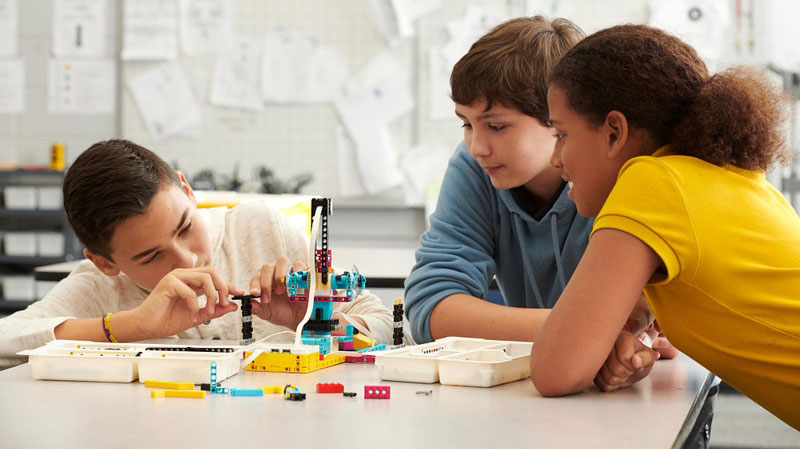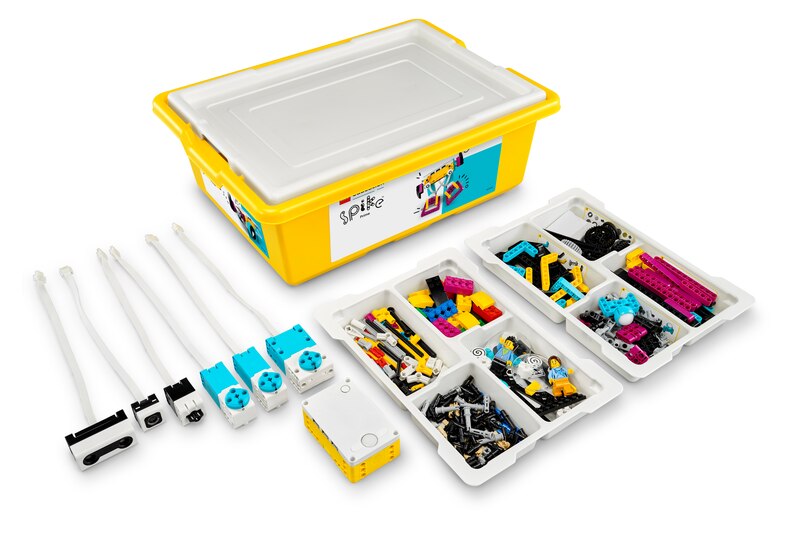As the name suggests, construction means building something or making things from scrap. Construction play is a part of the child’s healthy development and it encourages the student to manifest their ideas and bring them to reality. Imagine the level of excitement on your kid’s faces when they join blocks of toy pieces together to build a bridge or a tall building tower. Our world would come to a standstill if it weren’t for genius engineers putting their thoughts together to materialize new & improved roadways, better railway networks, and design dams, for the benefit of the public at large. The perpetuity of construction never stops and progressive regions like the Middle East, invest heavily on keeping their framework up-to-date at all times.
They say, ‘Play is our brain’s favorite way of learning’ – Diane Ackerman, and if you want your child to develop into a happy & talented individual, it is best to invest correctly in playtime.
Advantages of constructive play:
#1 Open-ended activities make learning fun and intriguing. There are no rules that need to be followed in this type of format, so one can go all-out in expressing themselves and gain independence as a by-product of play.
#2 Physical strength and movement are essential throughout our lives and constructive play gives every opportunity for kids to develop fine motor and gross motor grips. When blocks & other toy objects need stacking, grasping, and joining, there is some level of technicality required, which children learn to master over time.
#3 Smart concepts such as prototyping, testing, and remodeling, are difficult for kids to understand if they were explained in theoretical format by the class teacher. However, while playing with constructive toys such as LEGO® Education SPIKE™ Prime Set, the same examples are reiterated, as students focus on making models from colorful building elements and use basic hardware to practice programming. The LEGO® Education SPIKE™ Prime Set is available for purchase in UAE and other GCC regions by simply clicking on this link: https://shop.knowledge-hub.com/
#4 To be a lifelong learner one must know how to apply problem-solving techniques and experiment to find different solutions. The very nature of constructive toys allows the players to use trial & error and overcome challenges on the way to manifesting what they want to build. Overcoming difficulties to curate a particular type of structure will aid creative thinking & problem-solving skills. Though the activity is unstructured, somehow you will learn about time management, how to deal with errors, and inculcate the values of team bonding, through such play.
#5 As children get older, they start to develop more complex models and structures vs. joining basic colored blocks to make a flat road. They are now capable of developing a full scene or storyline which includes different characters and numerous elements (for example a scene of a ‘fun & fair’ event or Dubai Expo 2020 Exhibition stalls). The process becomes slightly elaborated, where students have to first think of what goal they want to achieve, and then start mapping a plan to achieve this goal of putting together an attractive exhibition model venue. In the bargain, one learns important Math concepts such as quantity, classification, value, measurement, and spatial awareness, so as to have fun while memorizing concepts.

Here’s How You Can Encourage Constructive Play
#1. Do not instruct what needs to be done. Allow children to choose their toys and give them the freedom to explore. Make sure the toys are appropriate as per the learning capacity of the child and the level of complexity they are able to sustain.
#2. Let students use their hands and get dirty. Don’t stress about order & tidiness too much, as this will restrict their creativity.
#3. Invite the child to organize his toys and store them in drawers, which are easily accessible & reachable. Learning to clean up the mess after playtime, is an important tip to follow.
#4; Give the participants time to describe what they have created. This gives them a chance to communicate and learn how to present their work, before an audience.
#5. Lastly; some examples of good construction toys to keep accessible at home or in schools are; puzzles, blocks, manipulatives, woodworking sets, and Lego®, amongst others.

